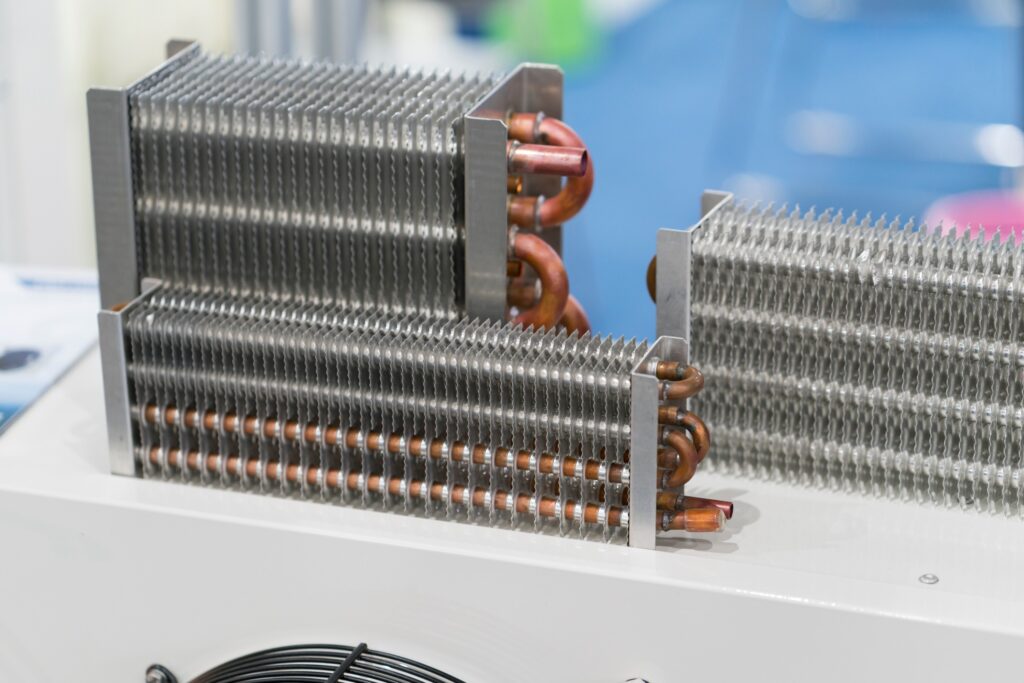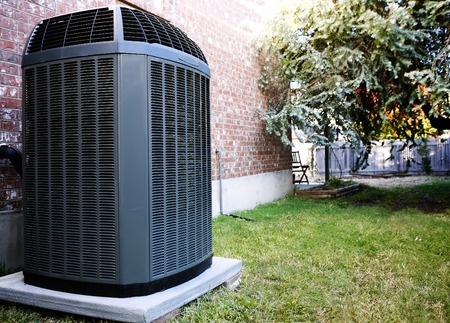Heat exchangers (also known as heat transfer systems) do what the name implies. They change the temperature of fluids that pass through them. The key to heat exchangers is the large surface area of copper tubes. Heat is transferred rapidly in liquids and gases by conductive and convective mechanisms. Cooling tower manufacturers have found a way to harness this natural phenomenon to provide efficient cooling for industrial applications. Read on to learn more about heat exchangers and their function from Fritts Heating & Air.
What is a Heat Exchanger?
A heat exchanger is a device that transfers heat from one fluid to another. The fluid may be a gas or liquid, which can transfer heat by convection, conduction, or radiation. There are several types of heat exchangers, including the shell-and-tube type, plate type, and tubular finned tube type.
How Does a Heat Exchanger Work?
A heat exchanger is a device that transfers heat from one fluid to another. The fluid may be a gas or liquid, which can transfer heat by convection, conduction, or radiation. A heat exchanger transfers heat from one fluid stream to another through direct physical contact between the two streams. The main difference between different types of heat exchangers is how they are constructed and what type of fluids they use.
For example, a steam generator uses steam as both its input and output fluid streams. It consists of tubing coils containing fine tubes called finned tubes with fins attached along their length, so they resemble miniature radiators. Steam enters at one end and exits at the other after being cooled by an external medium, such as water or air passing through these finned tubes inside the coil.
Cooling Towers With Heat Exchangers
Heat exchangers are used in many industrial processes where they help to improve efficiency or reduce environmental impact. For example:
Cooling towers use two heat exchangers—a water-to-air counterflow heat exchanger and a fan-induced draft tube—to cool water for industrial uses like power plants or air conditioning systems.
A refrigeration system uses an evaporator coil (an expansion valve) and an air conditioner compressor to move heat from inside an air-conditioned room into outdoor air during summer months to keep temperatures comfortable inside buildings.
Types of Heat Exchangers
Heat exchangers are devices that transfer heat from one medium to another. They are used in many applications, including the cooling of engines, gas condensing, and even water heating.
In a heat transfer system, two fluids flow past each other. One fluid must be hot, and the other must be cold. The two fluids should not mix together, so they should have different densities and viscosities (properties that affect how easily they flow). When they meet inside an industrial exchanger, they exchange their temperature but not their mass; this is called “adiabatic” exchange (meaning no work was done by friction).
Heat exchangers can be classified into two broad categories: single-pipe and double-pipe. Single pipe heat exchangers feature a single pass through which both fluids flow simultaneously. Double pipe heat exchangers have two paths for each fluid; one path is used for pumping, while the other is used as a condenser channel.
Double pipe heat exchangers are divided into three types: shell and tube, plate, and finned tube.
Shell-and-tube heat exchangers feature tubes that intersect a shell where liquid flows through the tubes while gas flows in pockets between them.
Plate heat exchangers use thin plates separated by grooves, which allow gas to flow through them while liquid moves over them.
Finned tube heat exchangers use fins attached to tubes at regular intervals to increase surface area for greater heat transfer efficiency.
The most common type of heat exchanger is a plate-fin-tube (PFTE) type. The working fluid tubes are placed inside a finned shell made from metal plates in this design. Air flows over these fins to cool them, which helps transfer heat away from the tubes to the air stream.
Industrial Exchangers
Heat exchangers are used in many industries, including oil and gas, chemical, petrochemical, pharmaceutical, and power generation. They can be found in thermal plants, refineries and power stations, and other industrial applications.
Heat exchangers are used for heating or cooling fluids or gases. These fluids may be liquids or gases. Heat exchangers are typically used to transport heat from one place to another by changing the temperature of one fluid using another fluid.

Call Fritts Heating & Air Today!
Heat exchangers are used to transfer energy between two different forms. The most common heat exchangers used in transporting thermal energy transferred between different fluids in a heat exchange process. Heat exchangers are divided into two major classes: “condensers” and “evaporators.” Condensers use steam, while evaporators use air circulated past electrically or gas-fired coils or other heating elements to transfer heat energy.
Fritts Heating & Air is always available to help with HVAC repair or furnace maintenance. Our professionals have all the skills necessary to meet your needs.



